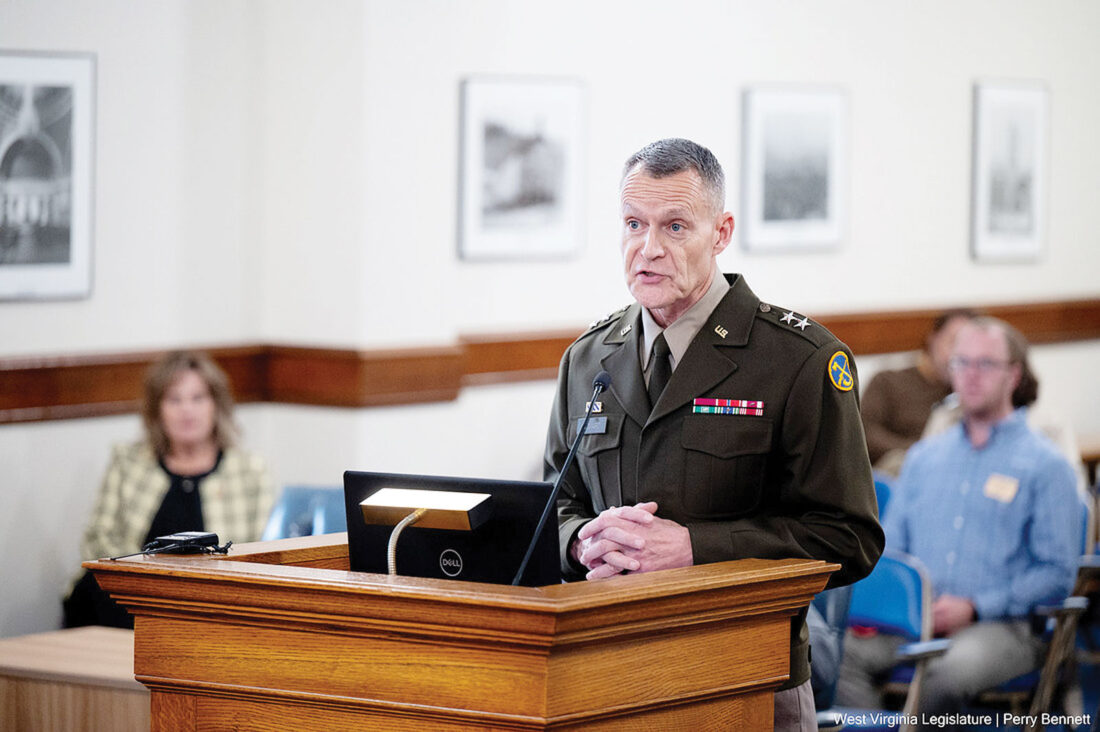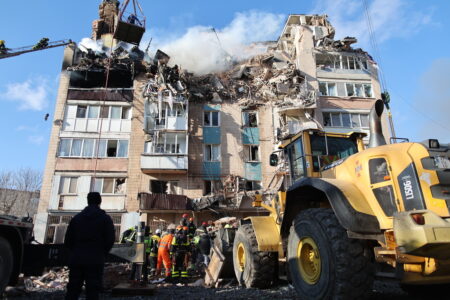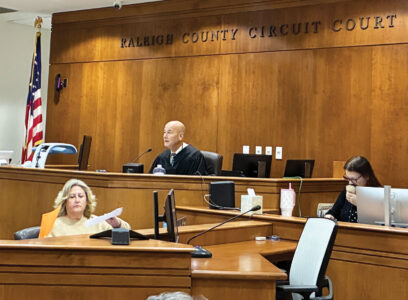Flooding in southern and northern West Virginia highlight changes in FEMA operations

Maj. Gen. James Seward, adjutant general of the West Virginia National Guard, briefed lawmakers Tuesday on the Guard’s flood response efforts across West Virginia this year. (Photo Courtesy/WV Legislative Photography)
CHARLESTON — Major flooding events earlier this winter in southern West Virginia and in June in northern West Virginia highlighted the state’s efforts to help people recover while also raising concerns about federal support for future flooding events. Officials with the West Virginia National Guard and the Department of Homeland Security were some of the people on hand to provide testimony about 2025 flood responses to members of the Joint Legislative Committee on Flooding Tuesday afternoon during October interim meetings at the State Capitol Building. Committee members first heard from Maj. Gen. James Seward, adjutant general of the West Virginia National Guard, which was first activated for major flooding in multiple southern West Virginia counties in February. Gov. Patrick Morrisey declared a state of emergency for a 13-county region after between 3 and 5 inches of rain created substantial flooding in those counties. At least three people — two grandparents and one of their grandchildren — were reported dead due to flash flooding. The Federal Emergency Management Agency accepted the state’s request for individual assistance for McDowell, Mercer, Mingo and Wyoming counties. A federal disaster declaration was issued for Ohio and Marion counties in July nearly 40 days following a flood event in those counties. Between 2.5 and 4 inches of rain fell in the Triadelphia and Valley Grove areas in 30 minutes the night of June 14, killing nine people and causing catastrophic damage. Additional storms hit Marion County throughout June 15, with approximately 3 inches of rain dropping throughout the day, causing significant damage to homes, businesses and roads. Between both states of emergency, the West Virginia National Guard deployed a total of 499 personnel and spent more than $2.2 million, removing more than 30,000 tons of debris across the two disasters. The operations were funded through the Governor’s Civil Contingency Fund, with the state seeking reimbursement from FEMA at anticipated match rates of 90% from FEMA and 10% from the state for the southern flood, and 75% federal funding and 25% state match for the northern flood. Seward said a combination of volunteers and unit activations were used for both flood events, with whole units activated for large-scale response; and volunteers being used to lessen the impact on families and employers. Seward said cooperation between state agencies and with local governments and volunteer groups helped recovery efforts go smoothly. “I was present on the ground multiple times in each location and was extremely impressed with the local emergency managers in the six counties down south and the counties up north in terms of their daily interaction or hourly interaction with my team,” Seward said. “Certainly, there’s some things that law and policy don’t allow us to do, but the teams worked hand-in-hand with those communities.” Doug Buffington, the acting secretary of the Department of Homeland Security and senior advisor to Morrisey, said it was the governor’s policy to be as proactive as possible for disasters, coordinating various state agencies, holding twice-per-day meetings, and visiting disaster areas as soon as possible. “It’s Governor Morrisey’s style, but he believed we should be a more proactive group, that we should be reaching out and we should be involved,” Buffington said. “I think one of the things we learned is we need to push harder. We need to be proactive.” However, state officials did notice a difference in FEMA response between the February flood event and the June flood event. While FEMA managed the setup of disaster recovery centers during the southern West Virginia flood – including securing buildings, providing security, and staffing the locations – state officials were tasked with these responsibilities on short notice for the northern West Virginia flood. President Donald Trump has also charged a FEMA Review Council with reimagining the disaster response agency, exploring the federal government’s role in disasters which could lead to FEMA shifting away from being the lead agency during disasters in the states and territories. State officials, including Buffington, have presented to the FEMA Review Council, arguing that West Virginia’s situation is unique, with the state averaging two federal disaster declarations per year but lacking the resources of larger states – like Florida or Texas – requiring a per-capita or proportional view of disaster impacts. “I have nothing bad to say about FEMA. They’ve been tremendous to us,” Buffington said. “But we, as a state, are going to have to look at how we address flooding and natural disasters in the future, and what that looks like. So, that’s something I also want to make you all aware of.”





